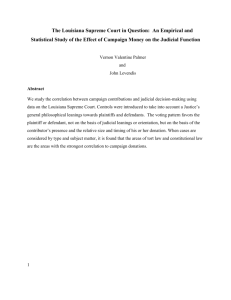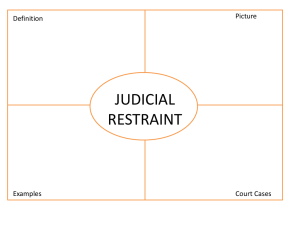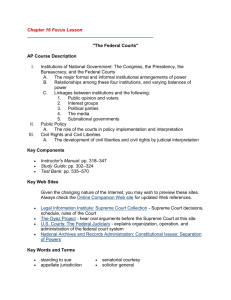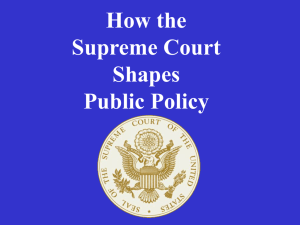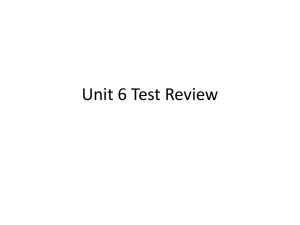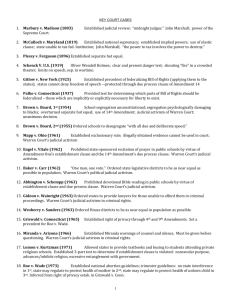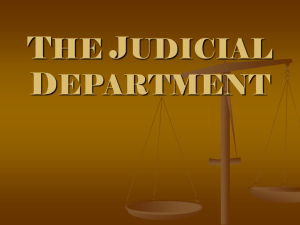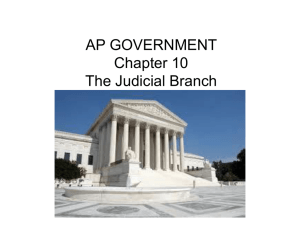Chapter 4 The Supreme Court and the Constitution
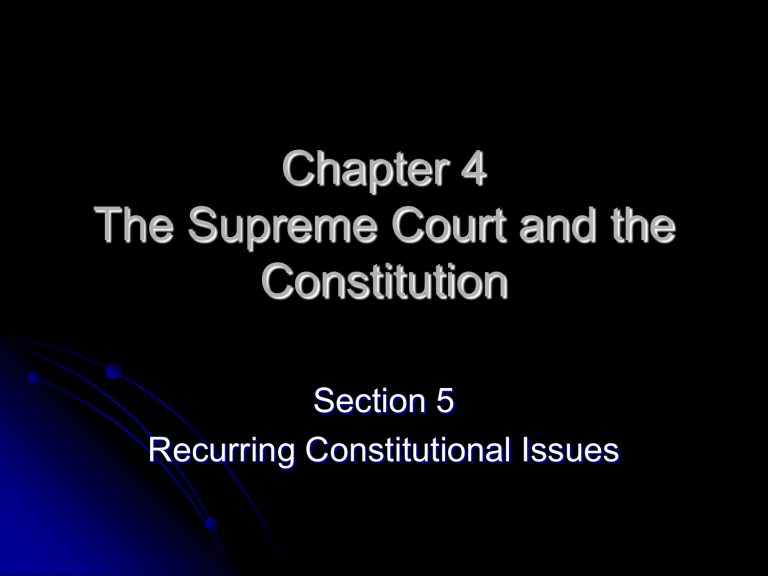
Chapter 4
The Supreme Court and the
Constitution
Section 5
Recurring Constitutional Issues
Constitutional terms
Capital Punishment
Death Penalty
Affirmative Action
Giving favored treatment to certain groups i.e. – minorities and women
Reverse Discrimination
Unfair treatment of a group of people as a result of trying to help another group suffering from previous discrimination
Constitutional Terms cont.
Quota
Number making up a proportional share
Judicial Activism
What the court determines to be fair and just based on the facts it has been given
Judicial Restraint
Basing decisions on previous decisions dealing with similar legal issues
What cases reflect Judicial
Restraint?
Abington v. Schempp
Furman v. Georgia
Roe v. Wade
Main Ideas
On what grounds has the Supreme Court ruled against laws allowing prayer in public schools?
That prayer in public schools violates the establishment clause of the first
Amendment
Main Ideas
Why did the Supreme Court effectively ban the death penalty in the U.S.?
Two judges said it was cruel and unusual punishment and three of them objected to the way it was applied
Main Ideas
In the Court’s views, when are racial quotas considered a form of reverse discrimination?
Racial quotas are considered reverse discrimination in any program receiving federal funds
Main Ideas
In what ways has the Supreme Court limited a woman’s right to an abortion?
The Court has allowed states to ban abortions in the final 3 months of pregnancy AND a state may require a minor to tell one or both parents before having an abortion
Main Ideas
How is the philosophy of judicial activism different from the philosophy of judicial restraint?
Judicial activism favors Supreme Court involvement in decisions about social policy
Judicial restraint is that the Supreme Court would leave public policy to Congress and the
President
Engel v. Vitale – Supreme Court and school prayer
The Supreme Court has strongly supported the separation of church and state. All their rulings have argued that the government cannot make laws that violate the establishment clause of the 1 st
Amendment

